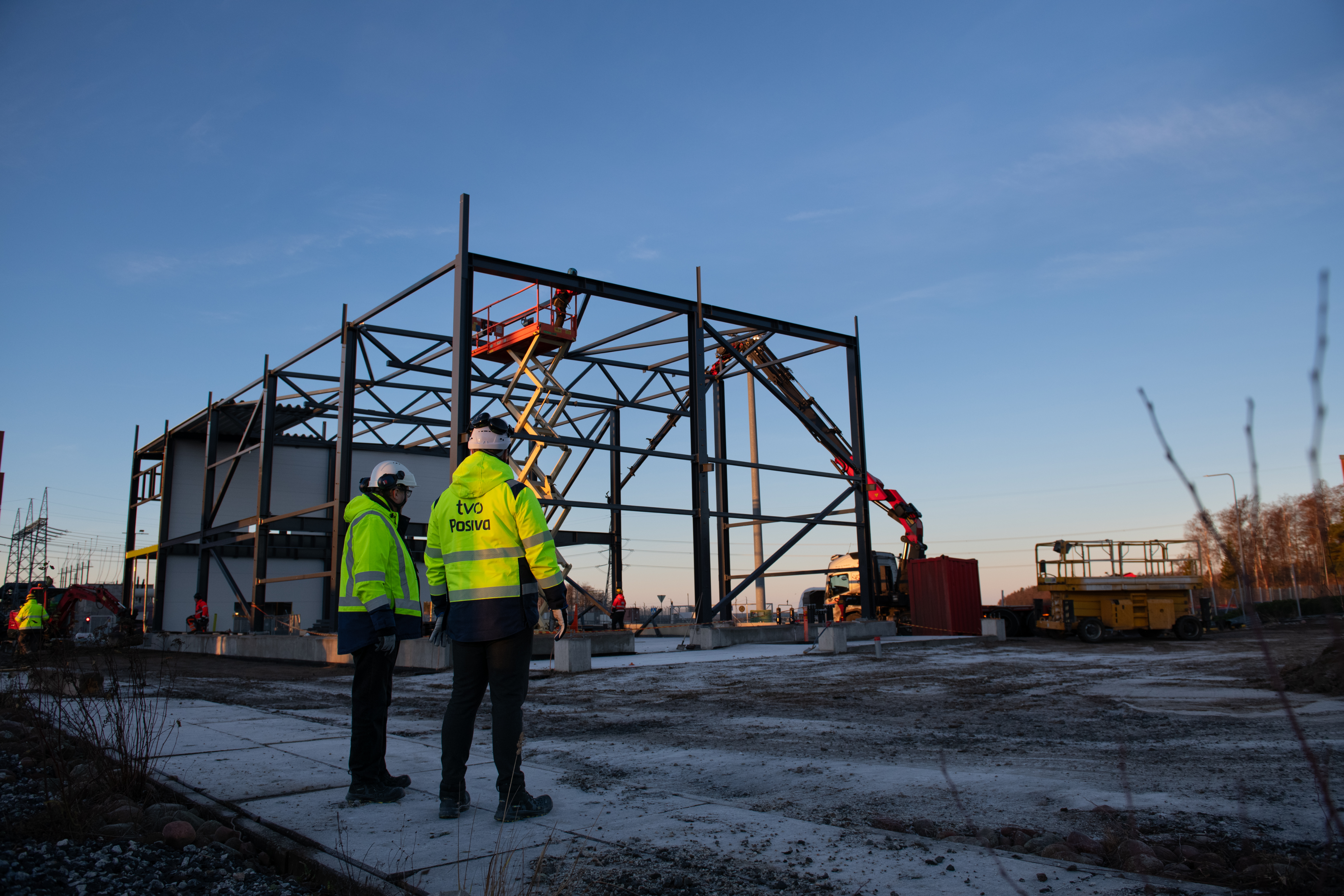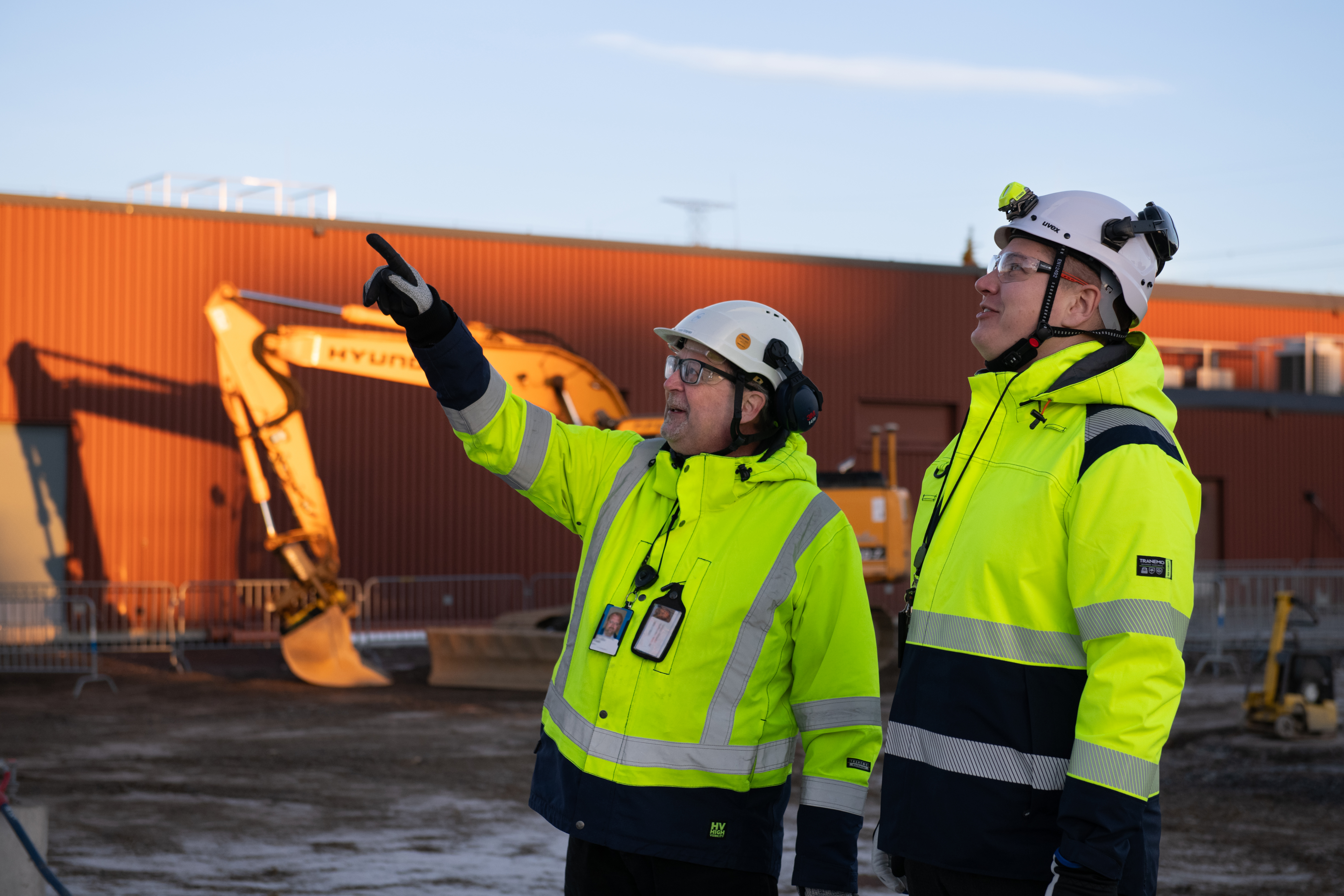Construction well underway: New demineralisation plant increases capacity and reduces use of chemicals
The first groundbreaking on the worksite of the new demineralisation plant in Olkiluoto occurred on 30 September. It was a swift start, as the decision in favour of the investment had been made in the Board of the Company only three days previously. Naturally, however, the project papers had been on the desks of Project Manager Tommi Virtanen and Site Manager Aarne Hyppölä for much longer than that. And they will not disappear from their desks any time soon. The goal is to have the new plant up and ready to run in early 2026.

As the word “new” in the name suggests, demineralisation is not something that has not been done before in Olkiluoto, as clean water plays a crucial role in the operation of the nuclear power plant. And we are talking about really clean, pure water. The water that comes to the new plant for demineralisation is already potable before purification even starts.
Tommi Virtanen points out that the purity of water is not a nuclear safety issue as such and normal tap water would be clean enough for the safe operation of the plant. It is rather a question of service life management for the plants and about ensuring more stable production cycles.
- The quality of water affects things like corrosion and organisms that live there. When the water is as pure as possible, the plants can be operated for longer periods without disturbances, Virtanen argues.
The purity of water also affects the radiation level. Impurities in water are prone to attract radiation so the purer the water, the less is becomes contaminated.
Several birds with one stone, in other words.
Increased capacity – reduced consumption of chemicals
One important reason for the new building is the increased need for pure water. Three plant units really do consume more than two. Indeed, numerically the new demineralisation plant has a clearly higher capacity than the old one.
- While the capacity of the previous plant was 30 cubic metres per hour, the new plant can boast 80 cubic metres, Tommi Virtanen compares.
The new plant is good news to the environment, as well. A new element of the future purification method is electrodeionisation, which actually refers to electric current, whereas the old method relied primarily on chemicals. The use of chemicals will now be significantly reduced.
- Compared with the thousands of litres of different chemicals used every year at the old plant, the new plant will use about a tea cup’s worth in a month, the Project Manager says.
Under cover of roof already this year
Construction work has started swiftly and the intention is to have the building under cover of the roof and also otherwise watertight by the turn of the year.
- The actual building systems will follow next, the aim being for the equipment supplier’s work to start in May and the commissioning stage in the autumn, the Site Manager explains. The production operation of the plant is currently scheduled to start in early 2026.
When finished, the new demineralisation plant will be about 30 metres long and 15 metres wide. It will stand on the north side of the plant area, near the multi-activity centre.
- Being able to implement the construction project outside the plant fencing makes the licensing process of the construction stage significantly easier, Aarne Hyppölä tells. However, the demineralisation plant will later end up inside the plant fences. The project will be concluded by extending the plant fence to enclose the new plant.

Old one also still operational
According to Tommi Virtanen, the old demineralisation plant will be kept operational for at least two years after the commissioning of the new plant. In practice, this covers the warranty period of the plant.
The old plant is still perfectly operable, but due to the age of the mechanical components, it is getting difficult to find spare parts.
- It is more or less the same age as the OL1 and OL2 plant units, close to five decades, Tommi Virtanen provides background.
His own career in Olkiluoto has not been quite that long, but a respectable length anyway. He got his first access permit to the plant area already in 1989 as a summer employee.
His colleague in the project, Aarne Hyppölä, had not even been born yet. However, Aarne has also spent quite a few years here already, for such a young man.
- I worked at the construction worksite of OL3 already in 2015 and then again in 2020 when I did my work practice during my studies in engineering, lists Hyppölä whose permanent employment with TVO started in 2023.
The two men believe that in this project their skill sets complement each other well.
- I knew we would need some good guys for this, and having kept an eye on Aarne I knew him to be one, Virtanen praises.
- I myself as a first-timer in a role like this am very pleased to have such solid experience by my side, replies Hyppölä.
Text: Ville Kulmala
Photos: Johanna Innola
Share